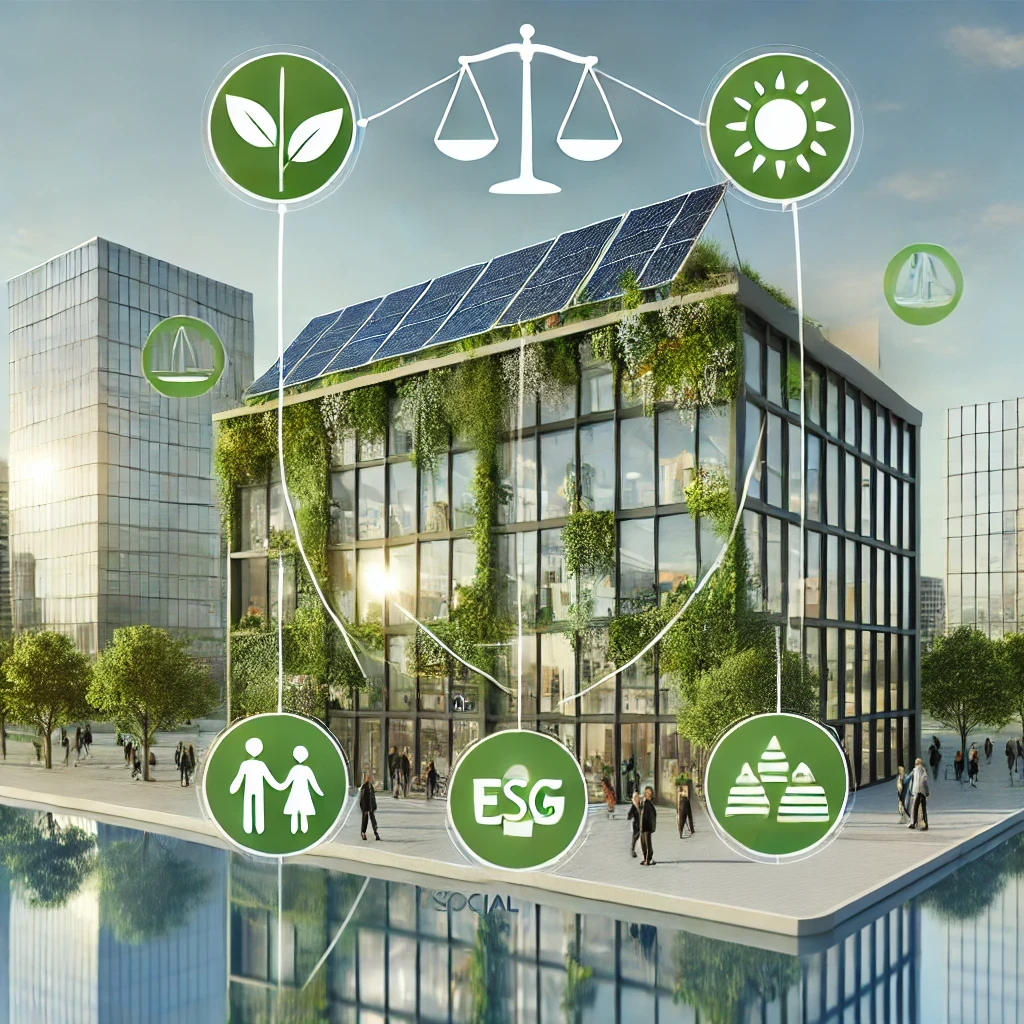Sustainability has become a core objective across industries, particularly in construction, real estate, and corporate governance. Companies are increasingly prioritizing Environmental, Social, and Governance (ESG) criteria to measure their sustainability performance and long-term risk management. In parallel, the Leadership in Energy and Environmental Design (LEED) certification, developed by the U.S. Green Building Council (USGBC), provides a globally recognized framework for sustainable building practices.
Integrating LEED with ESG strategies enhances organizational sustainability by aligning building performance with broader corporate responsibility objectives. This approach fosters transparency, efficiency, and long-term value creation.
What is ESG?
Environmental, Social, and Governance (ESG) is a set of standards used by investors, stakeholders, and companies to evaluate corporate behavior and long-term sustainability risks. ESG focuses on three core pillars:
- Environmental: Addresses a company’s impact on the planet (e.g., carbon emissions, energy usage, and waste management).
- Social: Evaluates how a company manages relationships with employees, suppliers, customers, and communities (e.g., labor standards, diversity, health, and safety).
- Governance: Examines corporate leadership, executive pay, audits, and shareholder rights.
Companies with strong ESG performance typically demonstrate responsible resource use, ethical business practices, and robust stakeholder engagement.
What is LEED Certification?
LEED is a globally recognized certification program for sustainable building design, construction, and operations. Managed by the USGBC, LEED evaluates projects based on environmental performance in areas such as:
- Energy efficiency
- Water conservation
- Indoor air quality
- Sustainable materials use
- Site selection and ecological impact
Projects earn points across various categories, leading to four certification levels: Certified, Silver, Gold, and Platinum. LEED-certified buildings contribute to environmental protection while reducing operational costs and enhancing occupant well-being.
Integrating LEED and ESG: Why It Matters
Combining LEED certification with ESG initiatives allows organizations to align their physical infrastructure with broader corporate sustainability goals. Benefits of integration include:
- Holistic Sustainability: LEED addresses environmental performance at the building level, while ESG expands sustainability practices across the entire organization.
- Increased Investor Confidence: Investors increasingly focus on ESG-compliant companies, and LEED certification strengthens the environmental component.
- Regulatory Compliance: Both frameworks help companies meet international sustainability regulations and reporting requirements.
- Enhanced Brand Reputation: Combining LEED and ESG demonstrates a commitment to ethical practices, sustainability, and community well-being.
How to Integrate LEED and ESG Strategies
Align LEED Credits with ESG Goals
- Map relevant LEED credits to ESG objectives (e.g., energy efficiency credits supporting carbon reduction targets under ESG).
- Prioritize credits that directly contribute to ESG performance, such as renewable energy use or water conservation.
Incorporate ESG Metrics into Building Design
- Use ESG reporting frameworks (like GRI or SASB) during the design and construction phases to ensure alignment with corporate sustainability goals.
- Ensure building practices reflect ESG priorities, including supply chain sustainability and ethical labor practices.
Implement Transparent Reporting
- Combine LEED performance data (e.g., energy use intensity, water consumption) with ESG reporting systems.
- Provide regular updates to stakeholders on both LEED certification progress and ESG achievements.
Promote Social and Governance Factors through Building Operations
- Address social aspects by designing inclusive, accessible spaces that prioritize occupant health and well-being.
- Implement governance policies, such as transparent reporting and ethical sourcing of construction materials.
Continuous Improvement and Monitoring
- Use ESG key performance indicators (KPIs) to monitor the ongoing sustainability performance of LEED-certified buildings.
- Conduct periodic audits to assess energy performance, social impacts, and governance compliance.
LEED and ESG: A Powerful Synergy for Sustainability
By integrating LEED certification with ESG criteria, organizations can drive long-term environmental, social, and economic value. This combined approach ensures that sustainability efforts extend beyond building operations and become embedded in the company’s core strategy.
- Environmental Impact: Lower carbon emissions, reduced water usage, and improved energy efficiency.
- Social Responsibility: Enhanced occupant well-being, diversity in design, and community engagement.
- Governance Excellence: Stronger transparency, accountability, and stakeholder trust.
Conclusion
Integrating LEED and ESG frameworks enables organizations to pursue comprehensive sustainability goals while improving their reputation and operational resilience. Whether constructing new buildings, retrofitting existing spaces, or enhancing corporate governance practices, this holistic strategy ensures alignment with global sustainability standards.
By aligning building performance with corporate ESG objectives, organizations can drive measurable impacts, reduce environmental footprints, and contribute to a more sustainable and responsible future.

